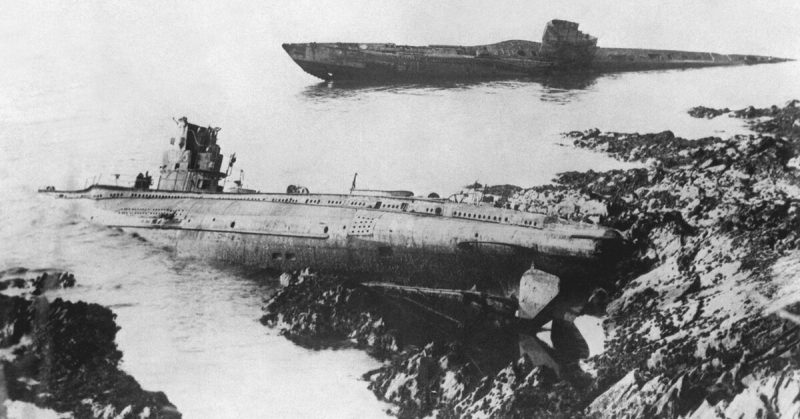Engineers involved in surveying the waters through the North Channel and the Irish Sea came upon the wreck of a WWI submarine while busy working on an undersea power cable off the coast of Scotland. They came upon this well-preserved wreck as they were charting the sea floor, and video material of the discovery was gathered by their Remotely Operated Underwater Vehicle (ROV.) The wreck is in a surprisingly good condition, considering that it has lain on the seabed 340 feet down for almost 100 years.
Using the images and information supplied by the surveying equipment, the engineer in charge, Dr. McCartney, has come to the conclusion that the submarine is either the UB-82 or the UB-85, both of which were sunk by British Patrol ships within that area during WWI. There were many submarines that were sunk in that area during that time, but this one has been identified, using its dimensions and external silhouette, as a German UB III-class submarine. The UB III-class was one of the U-boats that the Germans experimented with during WWI, and was so successful that it became the basis of the design used for the Type VII U-boat.
The UB III-Class submarine’s single deck gun, which is mounted on a platform bow-side of the conning tower, to serve as a lookout and a control center on the surface, is visible in the images. Dr. McCartney also noted that this particular wreck has a 105mm gun. The UB III-class, at the end of 1917, had had the old 88mm guns replaced by 105mm guns, only to find that they were so heavy that they caused accidents. Within six months, therefore, they were refitted with the previous 88mm gun. This fact narrowed the possibilities down to the two UB III-class Submarines, the UB-82, and the UB-85, both of which were known to have been lost in the area during April of 1918.
During the war, German submarines sailed around the top end of Scotland and into the Irish Sea, with orders to attack British shipping. The two above-mentioned U-boats were among many ordered to attack shipping around the coast of Britain in 1918, a dangerous task, but even more so since they were required to surface regularly. Radio messages from the surfaced submarines could be fairly accurately tracked by British radio listening stations along the coast. Both submarines, (the UB-82 and the UB-85) were indeed tracked down via their radio messages, and British patrol ships were dispatched to find them.
British war records show that the UB-82 was attacked and sunk by British patrol boats on April 17, 1918, resulting in the loss of all 37 crew members on board the submarine. Not long afterward, also due to the tracking of radio messages, UB-85 was sunk on April 30, 1918, by the British patrol ship HMS Coreopsis. Caught on the surface at night, UB-85 attempted a crash dive to evade the patrol ship which had been spotted coming towards them. Unfortunately for them, once under the water, the submarine began flooding, and the only option was to blow all their compressed air, which brought the submarine back to the surface. Because of the situation, they were forced to surrender. Fortunately for them, all of the submarine’s crew members were rescued before it sank.
In order to be certain of this recently found submarine wreck’s identity, (unless a diver could find the shipyard stamp, which by this time has probably been worn away), it would be necessary to wait until the wreck of the other UB III-class submarine known to have sunk in the area is found. It is generally thought that this will happen – it is merely a matter of time. Once the second submarine is located, however, it would be possible to compare the two, and probably, by simply looking at the damage and the positions of the submarines with reference to the combat reports of the action – to be fairly certain of which one is which, Live Science reported.
